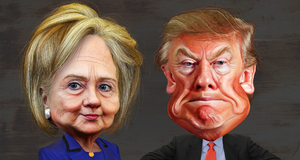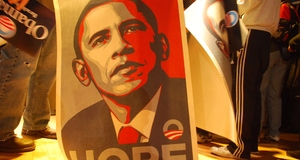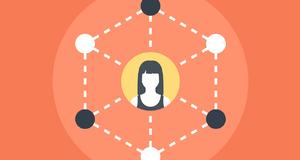The Obama PresidencyE-Electioneering: The Political and Cultural Influence of Social Media in the 2008 and 2012 Presidential Elections
By
2015, Vol. 7 No. 02 | pg. 4/4 | « Effect of Digitization on Future Campaigns and Electoral PoliticsBy digitizing these processes through both social networks and campaign websites, political socialization65 has evolved past in-person interaction and now contains a virtual component. In 2008 and 2012, and in all campaigns between and since then, Facebook has prompted users to indicate to their friends who they support publicly either by liking that candidate’s page or self-publicizing one’s own opinion66. In essence, our online identities have increased political cognition and awareness of current events due to its very nature. The Internet allows for rapidly disseminated information and has created a market for information targeting and data collection technologies. Creating a Voter Database through Social Networks and Social MediaAs previously mentioned, when realizing the potential of social networks prior to the campaign, Barack Obama realized that the party needed a way to gather information about voters to create extensive and detailed voter files in order to more adequately categorize and target voters. Existing voter activation software provided campaigns with voter files, including all public information about a registered voter and their past voting activity, to allow for an intuitive and dynamic management of all grassroots activity and political communication. These databases existed in 2004, when Democrats used a platform called DemZilla and Republicans used their version called Voter Vault67. Both technologies served the same function: they contained millions of active voter files across both parties, collecting information beginning with one’s first voter registration card and following up with the most recent census data, in order to streamline the national committee’s fundraising, canvassing and get out the vote efforts. Through this, volunteers and campaign staff could collect data, including a voter’s past donor history and what issues matter most to them, in order to archive all information and gain a better sense of the voter’s sentiment and the electorate’s composition68.After the 2008 elections and the reengineering of grassroots efforts, the Voter Activation Network (VAN) became the exclusive vendor of campaign technologies to the Democratic party, while its competitor NationBuilder remains bipartisan and open to either party. The software still serves the same purpose by offering voter file information to campaigns, labor unions, nonprofit organizations and national parties69. While these softwares do not sell the actual information, they do sell licenses for clients to access their database and use the existing information according to their specific campaign needs. Each campaign is also able to update or modify information in the voter file. VAN President Mark Sullivan noted that after working with Barack Obama’s 2008 presidential campaign, the company felt a push to incorporate elements of community organizing and online activism into their software70. The technology’s existing capabilities allowed campaigns to take the voter file and segment it according to their needs to create phone banks, door knocking lists, and robocalls. In 2010, VAN merged with NGP Software to create NGP VAN, currently the premium election software available only to Democrats which blends field data, communications and fundraising capabilities in order to create a smooth running and manageable campaign.71. Since then, campaign management software have been amplified to include components of social media and social network communications. In 2012, NGP VAN launched a ‘social organizing’ tool which connected one’s voter file to their Facebook pages72. Reflecting the important shift towards social networking in electoral politics, the top rated software system now created what was, in essence, Barack Obama’s initial goal: a way in which to target voters based on their pre-existing online information. The ‘social organizing’ tool allows campaigns to filter their voters into universes73 based on their online activity. After linking their profile to their voter file and segmenting into universes, campaigns can identify their supporters via their social networks and communicate with them through Facebook, similar to how a phonebank or canvass works, through targeted messages or posts from the party or campaign. A campaign can also equip the voter with tasks and responsibilities on Facebook, such as fundraising on behalf of the campaign or talking to a Facebook friend about a certain candidate in order to make them feel as though they are more politically active and can create change from the comfort of their homes74. The evolution of these technologies to incorporate aspects of a voter’s online persona is only the beginning. As predicted by President Obama in 2008, there existed the potential to take the pre-existing data on a social network and use it to create a more comprehensive voter file. Campaign tech companies, such as NGP VAN, have taken it a step further and used Facebook as a proxy to collect information about voters, such as their interests, demography, who they are friends with, and what matters to them75. Although the ‘social organizing’ tool is only an add-on to existing NGP VAN databases, it is likely to become commonplace and necessary in order to gain the advantage over opponents during future election seasons. Sentiment AnalysisAnother growing segment of the social networking machine is the science of sentiment analysis. Sentiment analysts take the language used in every online post regarding a subject in order to quantify how a population, or segment of it, feel about a candidate, issue or party. Although it is only in its development stages, experts predict that this data will make polling centers obsolete over time as sentiment analysis will prove to me a more cost-effective method of gauging popular opinion. For instance, this technology and the data analysts who retrieve it will be able to determine how female Facebook users feel about Hillary Clinton ahead of the 2016 elections, or how Floridians feel about a certain issue, such as climate change. Of course, such technology comes with its setbacks, which include its inability to detect sarcasm or humor when sifting through social network posts. This intertwining of social media and political broadcasting is currently being developed under a partnership between the traditional mainstream media network ABC News and the increasingly popular online media network BuzzFeed News, in conjunction with social networks such as Facebook76. ConclusionThe Internet’s enhanced role as a mechanism for communication has been capitalized on in all fields, most notably in politics. Globally, governments and citizens alike have used social networks and similar technologies as mediums in which to engage with each other. Today, it is seemingly impossible to run a successful electoral or social campaign without a social networking and online media component from which to engage with the electorate. This change in the way we conduct electoral politics is the most revolutionary shift in how we engage with our democracy. Social media is likely to replace television advertising as the electoral battleground where campaigns are won and lost. Increasingly, virtual technologies are used not only to communicate, but also to live-stream debates, speeches, sessions of Congress, and Presidential addresses. As the Internet becomes more deeply ingrained in the fabric of our democracy, it is important that the government and its actors constantly innovate so as to properly and effectively utilize such a powerful tool. The unprecedented and game-changing innovations presented by Barack Obama in 2007 exemplify this. By taking an existing technology and imagining a way in which it could be used to reach and engage with an apathetic constituency, President Obama revolutionized the way campaigns are planned and managed. This shift towards e-electioneering has left a significant political and cultural impression on the nature of American politics, while constantly evolving to better suit our democracy. Endnotes1.) Carr, David. The Media Equation: How Obama Tapped into Social Networks’ Power. The New York Times. November 9, 2008. 2.) Ibid. 3.) Harfoush, Rahaf. Yes We Did! An Inside Look at How Social Media Built The Obama Brand. New Riders: Berkeley, 2009. 4.) By definition, a candidate website is a site a voter can visit to learn more about a candidate’s background, positions and platforms. In its more modern form, it is now a one stop shop for all things concerning the campaign, often including a mechanism for donations, the ability to sign up to volunteer, and a calendar of events. 5.) Pew Research Journalism Project. E-Politics. April 2000. 6.) Ibid. 7.) Wolf, Gary. How the Internet Invented Howard Dean. Wired Magazine. January 2004. 8.) Carr, David. Op cit. 9.) Facebook Newsroom. Company Info and Timeline. 10.) The Statistics Portal. Number of Monthly Active Facebook Users Worldwide from 3rd Quarter 2008 to 3rd Quarter 2014, in Millions. 2014. 11.) Ibid. 12.) Pew Research Group. Social Networking Fact Sheet. January 2014. 13.) Carr, David. Op cit. 14.) Harfoush, Rahaf. Op cit. 15.) Ibid. 16.) Stelter, Brian. The Facebooker Who Friended Obama. The New York Times. July 7, 2008. 17.) Harfoush, Rahaf. Op cit. 18.) McCain, John. Biography. Accessed from JohnMcCain.com 19.) Obama, Barack. Biography. Accessed from BarackObama.com 20.) Zernike, Kate and Jeff Zeleny. The Long Run- Obama in Senate: Star Power, Minor Role. The New York Times. March 2008. 21.) Dutta, Soumitra and Matthew Fraser. Barack Obama and the Facebook Election. U.S. News and World Report. November 2008. 22.) Obama, Barack. Facebook page. Accessed October 2014. 23.) Dutta, Soumitra et al.. Op cit 24.) Ibid. 25.) Owyang, Jeremiah. Snapshot of Presidential Candidate Social Networking Stats: November 3, 2008. 26.) Ibid. 27.) Pew Research Journalism Project. McCain versus Obama on the Web: Social Networking. September 2008. 28.) Social networking and social media are terms incorrectly used interchangeably at times. For the purposes of this chapter, I will distinguish social networks as a virtual simulation of our everyday networks, such as a platform like Facebook or Twitter, in contrast to social media, which is a shareable item to be displayed on a social network, an example of which may be a photograph or YouTube video. 29.) Stelter, Brian. Op cit. 30.) Pew Research Journalism Project. McCain versus Obama On The Web: Candidate Sites as Information Sources. September 2008. 31.) Ibid. 32.) Pew Research Journalism Project. McCain versus Obama On The Web: Language. September 2008. 33.) Ibid. 34.) Ibid. 35.) Ibid. 36.) Pew Research Journalism Project. McCain versus Obama On The Web: Candidate Sites as Information Sources. September 2008. 37.) BarackObama.com. The Neighborhood Team Model. YouTube. June 2012 38.) Stirland, Sarah Lai. The New and Not-So-New in Obama’s Dashboard. TechPresident. May 2012. 39.) Grunig, James E., & Hunt, T.. Managing Public Relations. New York: Holt, Rinehart and Winston. 1984. 40.) Ibid. 41.) Grunig, James E. A Situational Theory of Publics: Conceptual History, Recent Challenges and New Research. 1997. 42.) United States Census Bureau. Table 327: Participation in Elections for President and U.S. Representatives from 1932 to 2012. 2013. 43.) Lopez, Hugo and Paul Taylor. Dissecting the 2008 Electorate: Most Diverse in U.S. History. Pew Research Center Hispanic Trends Project. 44.) Bipartisan Policy Center. 2012 Voter Turnout Report. November 8, 2012. 45.) Wooley, John and Gerhard Peters. Voter Turnout in Presidential Elections 1828-2012. University of California, Santa Barbara. 46.) Election Center 2008. CNN. November 4, 2008. 47.) Preston, Jennifer. In Social Media Battle, Republicans Sharpening Online Tools for 2012. The New York Times. April 2011. 48.) Ibid. 49.) Smith, Aaron. 22% of Online Americans Use Social Networking or Twitter for Politics in 2010 Campaign. Pew Research Center. January 2011. 50.) Preston, Jennifer. Op cit. 51.) Stromer-Galley, Jennifer. Presidential Campaigning in the Digital Age. Oxford University Press: 2014. (162) 52.) Steinhauser, Paul. Web Ad Mocks Obama as ‘Celebrity President’. CNN Political Ticker. April 2012. 53.) Romney, Mitt. Facebook page. Accessed October 2014. Although accessed recently, much of the information shared remains unchanged since 2012. 54.) Pew Research Journalism Project. How the Presidential Candidates Use the Web and Social Media. August 2012. 55.) Ibid. 56.) Pew Research Journalism Project. How the Presidential Candidates Use the Web and Social Media. August 2012. 57.) Ibid. 58.) Pew Research Journalism Project. Degree of Digital Effort: Obama Far Outweighs Romney. August 2012. 59.) Goodnow, Trischa. “Facing Off: A Comparative Analysis of Obama and Romney Facebook Timeline Photographs.” American Behavioral Scientist 57. 2013: 1584-1595. 60.) Iconography in the context of politics is a term used to define the visual staging of a work of art or photograph to convey political communication or alter public opinion. 61.) Bipartisan Policy Center. Op cit. 62.) Bear in mind, the Bipartisan Policy Center’s estimates from 2008 presented a significant discrepancy of up to five percentage points compared to data from other sources. 63.) Wooley, John and Gerhard Peters. Op cit. 64.) Bipartisan Policy Center. 2012 Election Turnout Dips Below 2008 and 2004 Levels: Number of Eligible Voters Increases by Eight Million, Five Million Fewer Votes Cast. November 2012. 65.) Political socialization is defined as the process by which people reach political cognition and awareness, and is typically the product of grassroots organizing. 66.) Zhang, Weiwu, Thomas J. Johnson, Trent Seltzer, and Shannon L. Bichard. “The Revolution Will Be Networked: The Influence of Social Networking Sites on Political Attitudes and Behavior.” Social Science Computer Review 28. 2010: (75-92). 67.) Grossman, Lev. Campaign 2004: Technology: What Your Party Knows About You. Time Magazine. October 18, 2004. 68.) Ibid. 69.) NGP VAN. Homepage. Accessed at NGPVAN.com 70.) Personal Democracy Media. Review of NGP VAN Software. 2010. 71.) NGP VAN. Voter Activation Network and NGP Software to Merge. 2010 72.) Nyczepir, Dave. NGP VAN Launches “Social Organizing” Tool. Campaigns & Elections Magazine. August 23, 2012. 73.) The ‘universe’ term is used by field operatives to describe the categorization of the voter file into segments based on demographics, past voting histories, or any relevant information to a campaign. 74.) NGP VAN. POKE: NGP VAN Introduces Political Organizing Tool. 2012. 75.) Fung, Brian. Democrats’ Latest Tech Mines Your Relationship Data. Washington Post. July 5, 2014. 76.) Smith, Ben. The Facebook Election. BuzzFeed News. November 9, 2014. Suggested Reading from Inquiries Journal
Inquiries Journal provides undergraduate and graduate students around the world a platform for the wide dissemination of academic work over a range of core disciplines. Representing the work of students from hundreds of institutions around the globe, Inquiries Journal's large database of academic articles is completely free. Learn more | Blog | Submit Latest in Political Science |


















